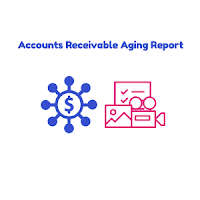Accounts Receivable Aging Report

Accounts Receivable Aging Report Definition
This report shows the Number of Accounts Receivable / Debtors or Customers that make periodic payments to Company during the Accounting Period. It shows those time periods of Unpaid Invoices during which the customers
are still not making payments to company due from them for the goods sold or services rendered on account.
As Accounts Receivable Aging Report shows the Customer Behavior in making over dues payments, so it is helpful in determining the Allowance For Doubtful Debts. The Customer for whom the invoices remain unpaid over longer period of time, the company uses Higher Fixed Percentage of Total of Uncollectible Accounts
Receivable. For Example, if the customer pays over 90 days, then the company may apply 15% To 20% of Total Uncollectible Accounts Receivable in order to get more accurate comparison between Actual And Unpaid Sales.
Accounts Receivable Aging Table is Prepared by taking Customers’ Name, Total of Accounts Receivable and the period during which the customers pays dues for unpaid invoices. Below
is a sample report of Accounts Receivable Aging Report.
Accounts Receivable /Debtor Aging Report Sample
Customers’ Name
|
Total Accounts Receivable
|
0-30 Days
|
60-90 Days
|
Over 90 Days
|
Mr. A
|
30000
|
30000
|
||
Mr. B
|
50000
|
20000
|
30000
|
|
Mr. C
|
20000
|
10000
|
5000
|
5000
|
The Customer, Mr. A pays the full amount of unpaid invoice within the range of 0-30 days while Mr. B pays total amount of debts due within the range of 30-60 days. The Customer Mr. C
pays slowly as compared to Mr. A And Mr. B, because this customer is fall within the range of 60-90 days.
Now a days due to Computerized Accounting System, Accounts Receivable Aging Report is prepared by An Accounting Software like QuickBooks which shows you the Customers’ Name, and
all invoices unpaid that are sorted by due date.
So, Accounts Receivable / Debtor Aging Report tells the company about the customers’s behaviour in making payments for unpaid invoices during the Outstanding Days.
This approach is also known as Balance Sheet Approach or Percentage of Receivables Approach to calculate estimated Uncollectibe Accounts Expense.
This approach is also known as Balance Sheet Approach or Percentage of Receivables Approach to calculate estimated Uncollectibe Accounts Expense.
Comments